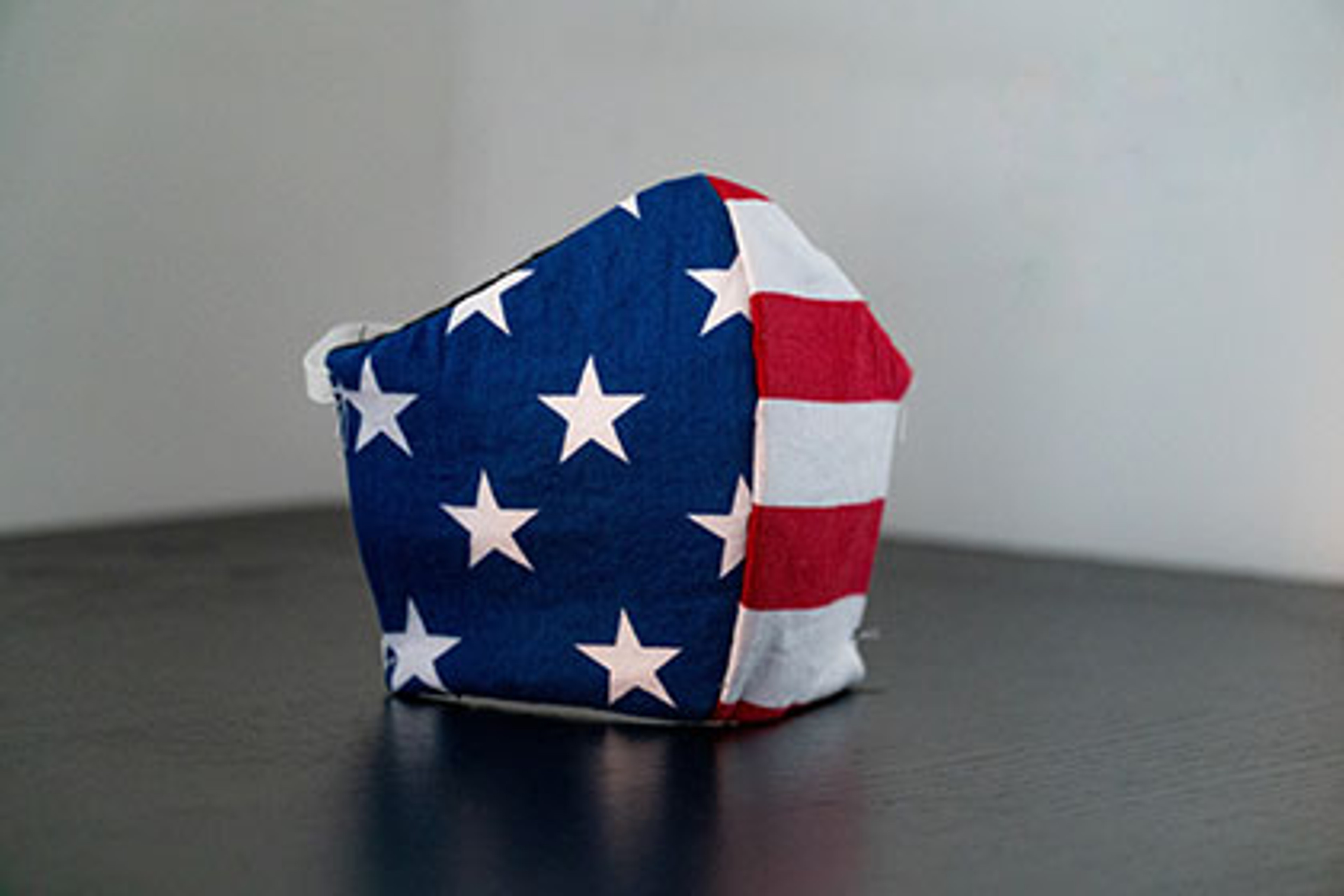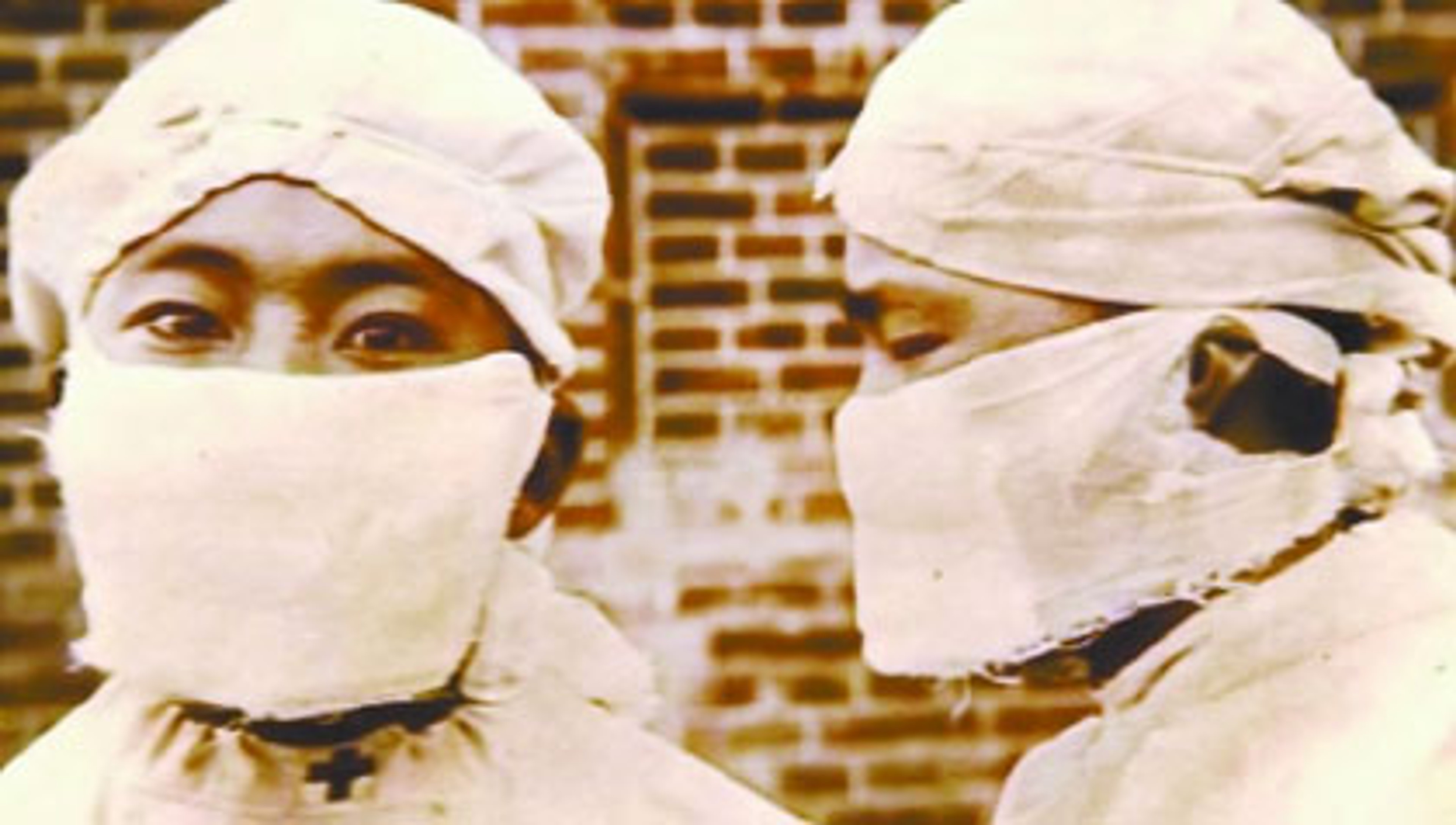Why Are Americans So Reluctant to Wear Masks?
Dr. Jennifer Bourne is the Associate Director of Fellowships & China Center, Berggruen Institute
Why are the American people so reluctant to put masks on, and why are American officials so hesitant to make mask-wearing mandatory?

COVID-19 reached the United States in late January with coronavirus-related deaths being reported as early as February 6. In the weeks that followed, as the virus quickly spread, many counties and states issued “stay-at-home” orders in an attempt to mitigate community transmission. However, it was not until April 9th, more than a month after California declared a state of emergency, that Los Angeles became one of the first cities to require its residents to wear face coverings when visiting essential businesses. In New York, the state hit hardest by the virus, it was not until April 15th that Governor Cuomo finally ordered all residents to wear face coverings in situations where social distancing is not possible, including on public transport, in stores, and on crowded sidewalks.
A variety of factors have contributed to this delay and reluctance.
First of all, there have been conflicting messages and regulations around the world over whether or not people should wear masks in public to slow the spread of COVID-19. On one hand, some governments have urged everyone to wear masks, which provide a barrier from respiratory droplets—the predominant way the virus spreads, in public and have made mask-wearing outside mandatory. In many parts of Asia, such as mainland China, Hong Kong, Taiwan, Japan, and South Korea, everyone now wears a mask by default. One of my Chinese friends jokingly said: “the new social norm [in Beijing] makes me feel that going outside without wearing a mask is like running naked.”
On the other hand, the World Health Organization (WHO) insists that only two types of people should wear masks: those who are sick and symptomatic, and those who are caring for people who might be infected. The Center of Disease Control (CDC) has long advised against mask-wearing, but has revised their recommendations in early April to encourage wearing face coverings in public.
From a technical perspective, masks not worn properly can be counterproductive. Their removal requires special attention, that many people aren’t aware of, to avoid hand contamination. According to some medical experts, masks can create a false sense of security that actually leads to an increased risk of infection.
There is also strategic concern that masks should be reserved for healthcare workers due to the shortage in supplies. That is why the CDC specified that people should wear cloth face coverings, not surgical masks or N-95 masks which should be reserved for frontline workers. Similarly, when Los Angeles City issued their mask-wearing mandate, Mayor Garcetti specifically stressed that his order does not require the face coverings be medical grade.
Moreover, there are different cultural perceptions of wearing masks. In Asia, due to the convention of collective thinking, the welfare of society is prioritized over individual preference. In a pandemic, people wear masks to show their care for each other and to demonstrate solidarity. Before coronavirus mask-wearing had already become a social norm. In Asia, it is not uncommon to wear a mask for beauty concerns, like covering a pimple or hiding a red nose during allergy season. Masks are also an easy way to cope with air pollution or keep warm in the winter and can be used to combat privacy and security concerns, like being caught on surveillance cameras or harassed by strangers on public transit.
In the West, though, there is a deep cultural resistance and even stigma associated with face coverings. It suggests that one is sick or contagious and should be isolated. Wearing a mask when one is perfectly healthy is perceived as insincere and socially awkward. Socially, being able to see one’s face is important as Westerners rely on more nonverbal cues like eye contact, facial expression, and vocal sounds to judge intention and meaning in conversations. With masks on, it can be more difficult to catch those nonverbal cues.
There are also harmful stereotypes associated with face coverings. Hijabs, head coverings worn in public by some Muslim women for religious reasons, are seen by some as an oppression of religious freedom and female equality. Facial coverings have come to symbolize a rejection of progressivity whereas uncovered women are seen as in pursuit of individual liberty and modernity. In more extreme cases, religious face coverings are associated with deceptiveness, and even security threats, which has led many European countries including Germany, France, Italy, and Austria to issue various degrees of bans on Islamic veils in public places. In non-religious cases, people of color have expressed fear of wearing masks publicly because of its potential to exacerbate racial profiling and place their lives in greater danger. The image of a black male wearing a hood and a mask is often prejudicially associated with crime or violence.
Under normal circumstances, the best practice would be to always follow the preference of locals in cross-cultural settings. When in Rome, do as the Romans do. When an Asian person travels to the West, he should take off face coverings when talking to his Western counterpart. When a Westerner visits Asia, he should not feel offended when his Asian interlocutor is wearing a mask.
However, we are not under normal circumstances. We are in the middle of a global pandemic and America is in an uncharted territory. A recent survey conducted by ABC News suggests that more than half of Americans are beginning to wear masks as a new coronavirus-induced normal takes hold. This survey suggests that cultural and social perceptions towards mask-wearing can change in the face of crises to form a new norm.
If that proves to be true then it follows to ask: Will this new norm hold in America? A brief review of the modern history of mask-wearing in China and Japan may shed some light.
In 1910, in order to combat the pneumonic plague in China’s Manchuria, Chinese authorities broke with their longstanding opposition to Western medicine and appointed Wu Lien-teh (also known as Wu Liande), a young and brilliant Cambridge-educated Chinese doctor, to oversee efforts to stem the outbreak. Wu went deep into the affected areas to lead prevention and control work, and soon identified that the plague spread via droplets in the air. He designed masks to protect against these droplets and ordered the infected and their immediate contacts to wear them, encouraging the general public to follow suit. Once the epidemic was over, most people took off their masks and discontinued the practice. Then in 1937, with the onset of the Sino-Japanese War, face masks became popular again to protect against chemical and biological warfare. But, after the war, Chinese people once again put away their masks. It became a pattern that when there were airborne diseases, the Chinese would put them on and when the epidemics were over, they would take the masks off. It was not until the turn of the 21st century that mask-wearing became a norm in China. Mass industrialization has led to severe air pollution in China and masks became needed year around to protect from the unhealthy air quality. Then in 2003, SARS broke out and killed thousands of people in China; the memory of the suffering the outbreak caused has cemented the norm of mask-wearing in China. As a result, when COVID-19 hit, many Chinese people were already wearing masks and those who weren’t wasted no time putting them on. Many even had a few N-95 masks handy, which had been bought to protect against the smog.

In Japan, the introduction of a mask-wearing culture was also initiated by combatting a virus and can be traced back to 1918 when the Spanish flu reached Japan. Years later, the Great Kanto Earthquake of 1923 triggered a massive inferno and the sky was filled with smoke and ash for weeks. Japanese people again donned their masks to protect their respiratory systems. In 1934, a second global flu epidemic cemented Japan’s love affair with masks and since the 1950s, Japan’s increase in industrialization has led to rampant air pollution, shifting mask-wearing from a seasonal to a year-around habit. In recent decades, masks with unique colors, shapes, and designs have become symbols of fashion to the degree that Japanese people have no problem wearing them all year around.
It follows that perhaps one reason why Americans were so slow to put on masks could be that, until COVID-19, America has not faced a situation that demands them since the 1918 flu. It escaped the 2003 SARS outbreak, got H1N1 under control quickly, and the air quality in the United States has generally been good. It is worth noting that the fact that the US does not have a mask-wearing culture does not mean that American people have never worn masks in history: during the 1918 flu pandemic, it was mandatory for the public to wear masks in some parts of America and in 2019, as wildfires raged up and down California, local residents did put on masks to avoid breathing the dangerously smoky air. These cases may simply have been too anomalous and disconnected to instill a new norm.
Another reason for the resistance to mask-wearing in our current time could be that people may not realize that wearing masks has important symbolic meanings. It is a visual reminder of the danger of the virus. It reminds us that we are not in our usual comfort zone and that we should resist touching our faces and eyes and maintain social distancing. It warns against complacency. Most importantly, it shows our commitment to protect not only ourselves but also society at large. It demonstrates that Americans are able and willing to take collective and unified actions when needed to. It symbolizes solidarity for the best interest of the nation. Given the shortage of test kits and the possible asymptomatic nature of COVID-19, there is no way to be sure if we or the people close to us are contagious. New York Governor Cuomo has recently been promoting a campaign called “Who are you wearing your mask for”? It’s a timely campaign encouraging people to not only think about themselves but the ones they love and care. More campaigns of this kind should be promoted in the US. Wearing masks is a way to demonstrate that we are one country and one people and that we are in this together.
To return to my earlier question: How long is this new norm of wearing masks going to hold in America? My answer is: as long as our fight with COVID-19 demands it, and possibly no longer. As seen from the Chinese and Japanese examples, it will take more than a single virus to make this mask-wearing phenomenon a more permanent social norm. Deeply rooted in cultural resistance and social profiling towards mask-wearing, I doubt that the Western perceptions are going to change after this pandemic. But I am certain about one thing: when the next pandemic hits, the Americans officials will take much less time to issue mask-wearing orders and the American people will need much less persuasion to put their masks on.